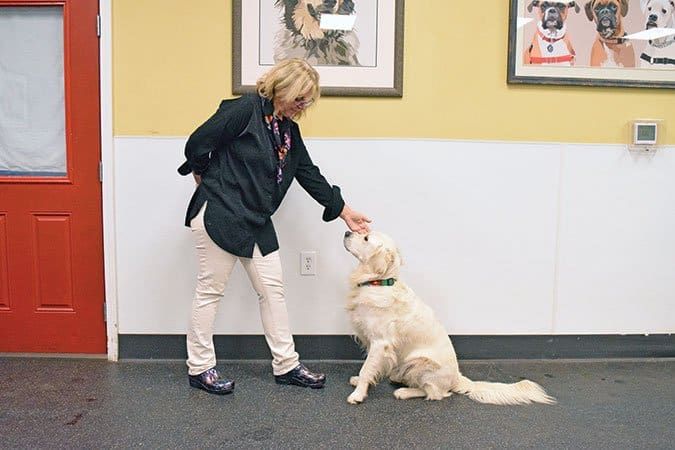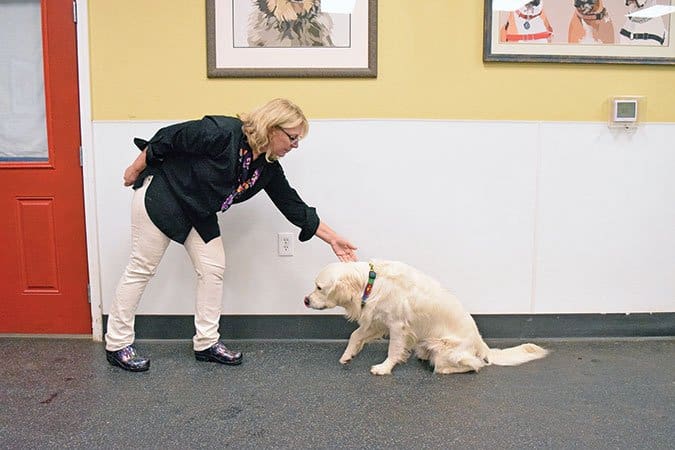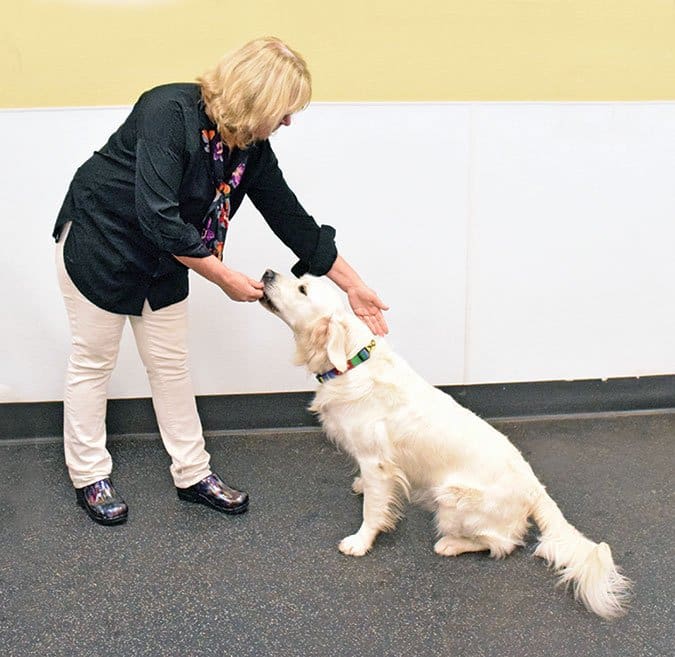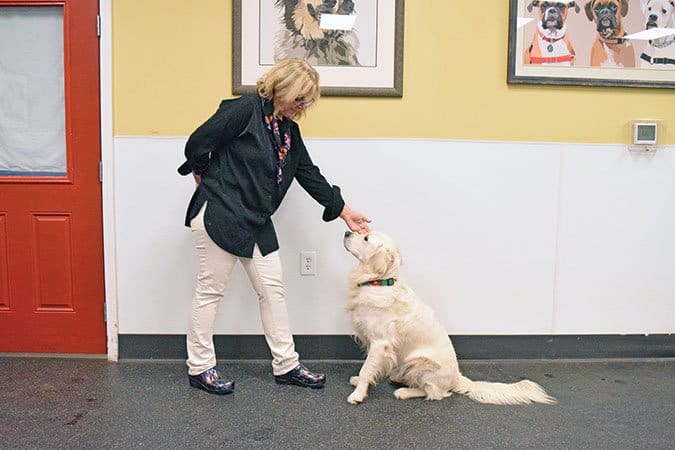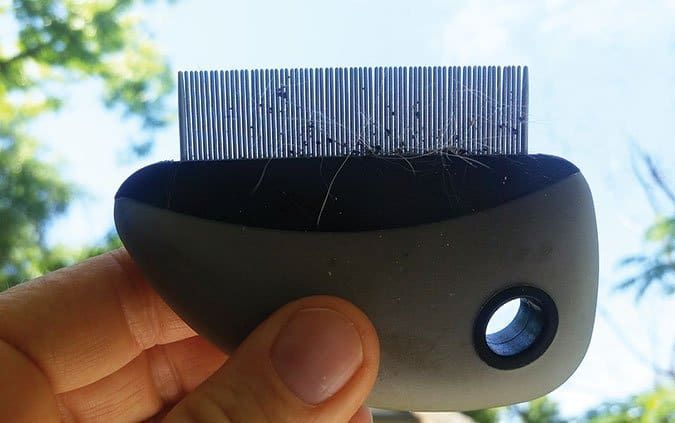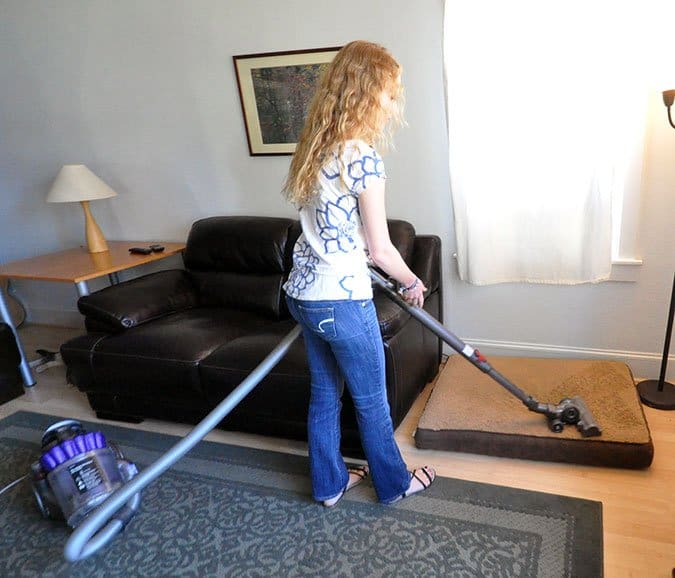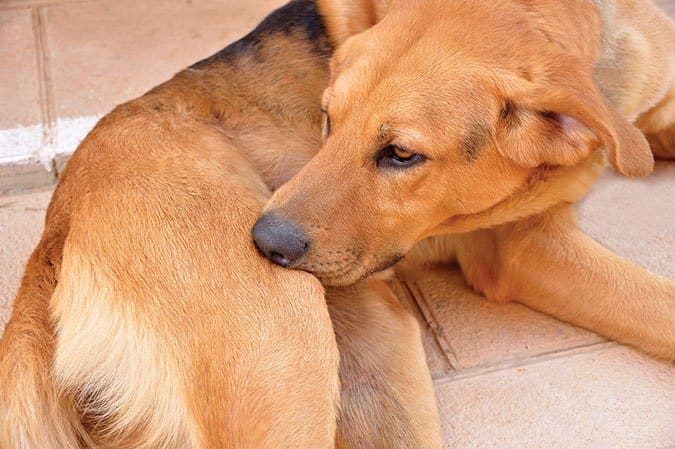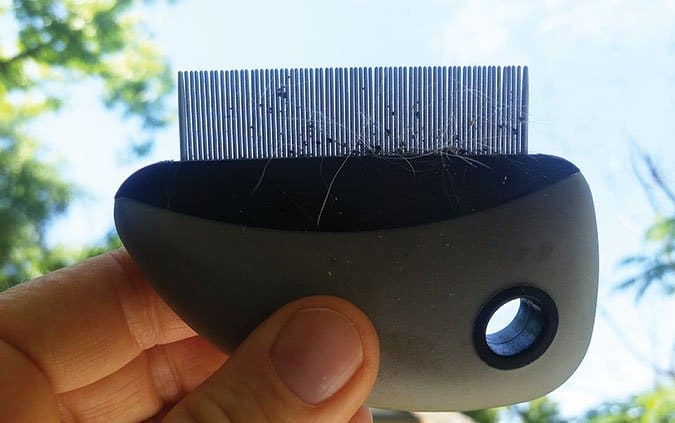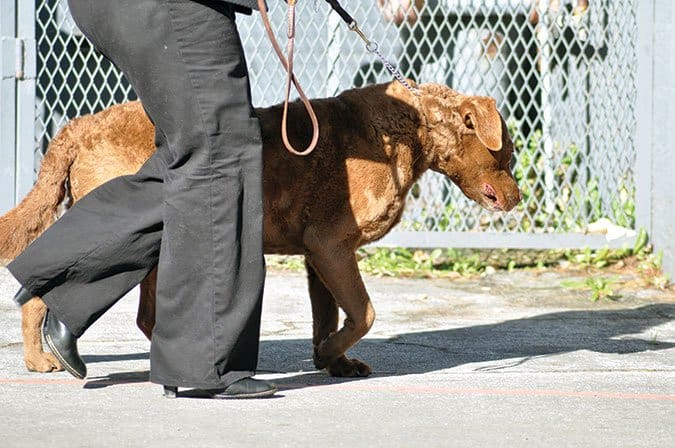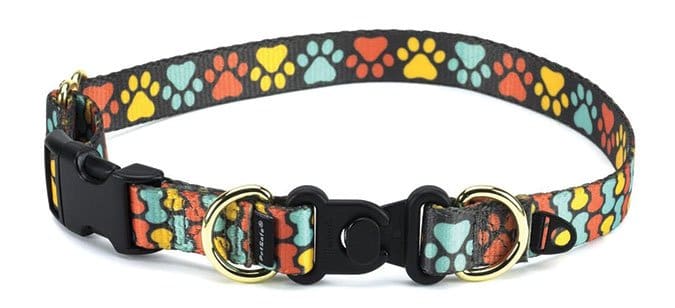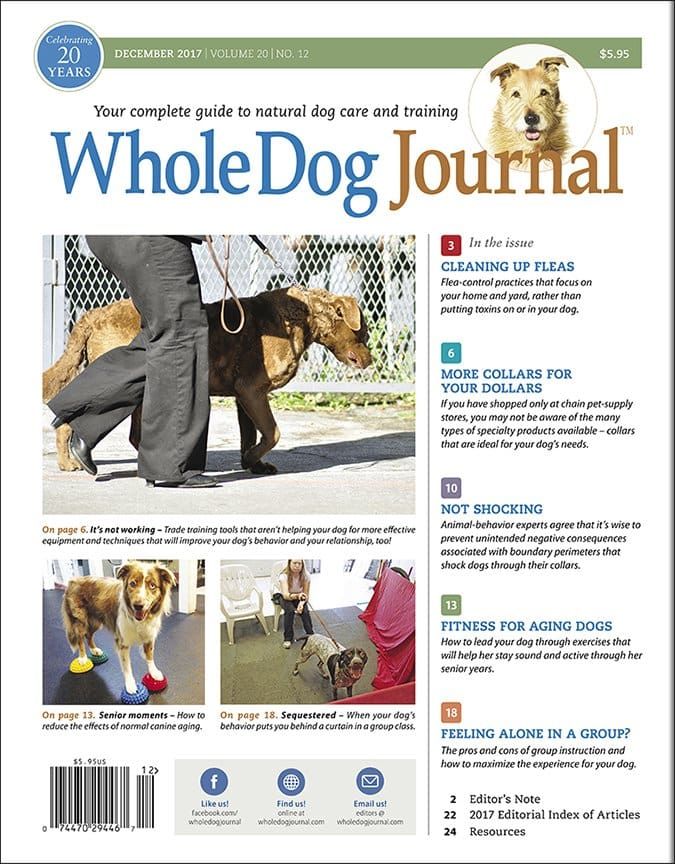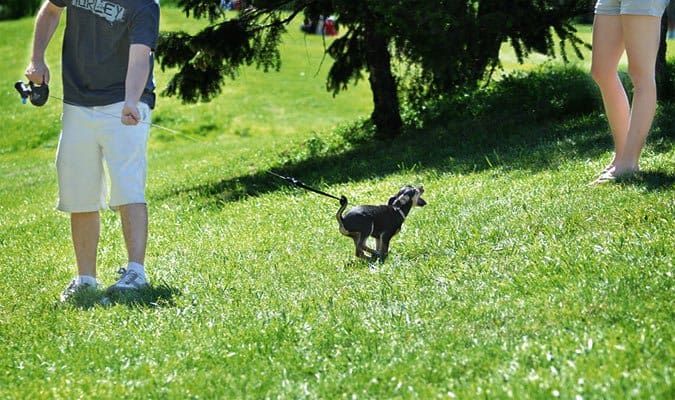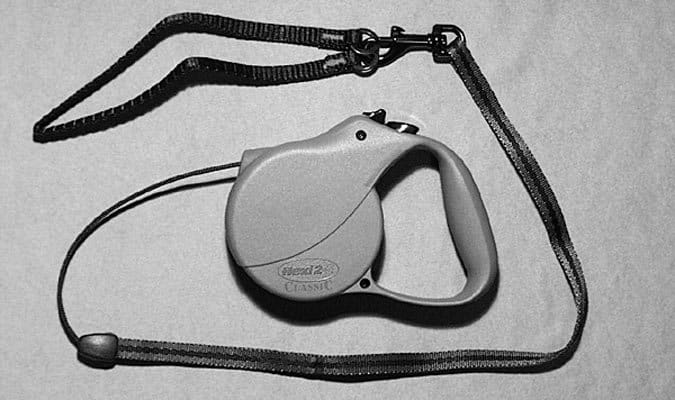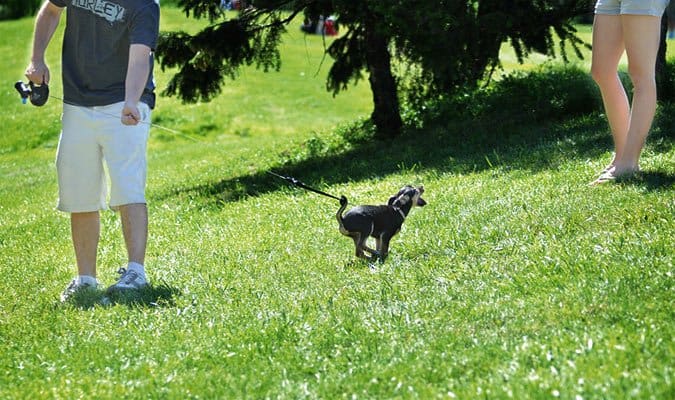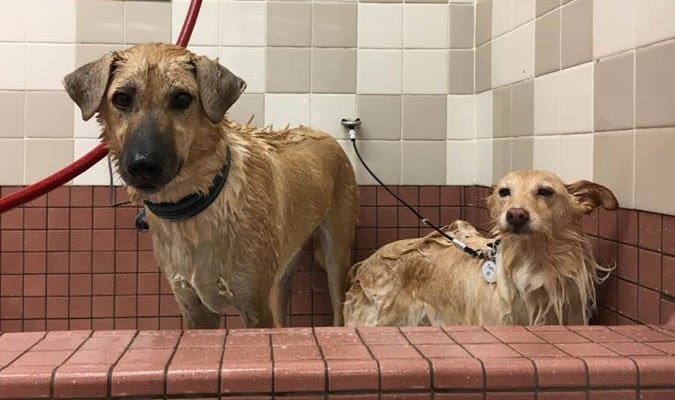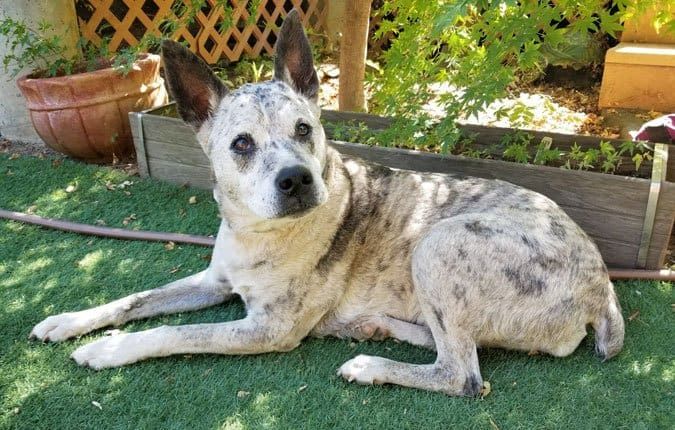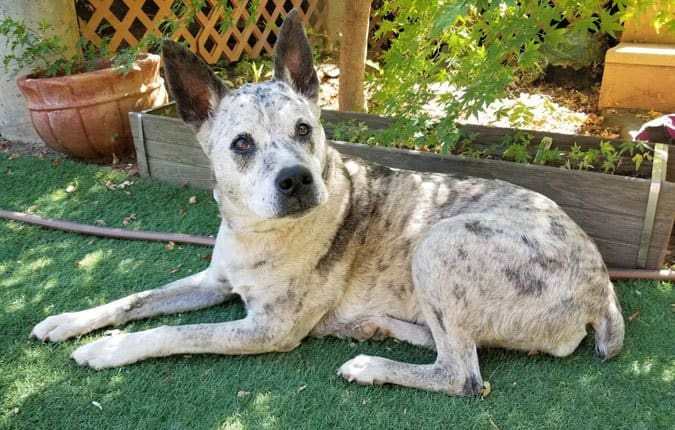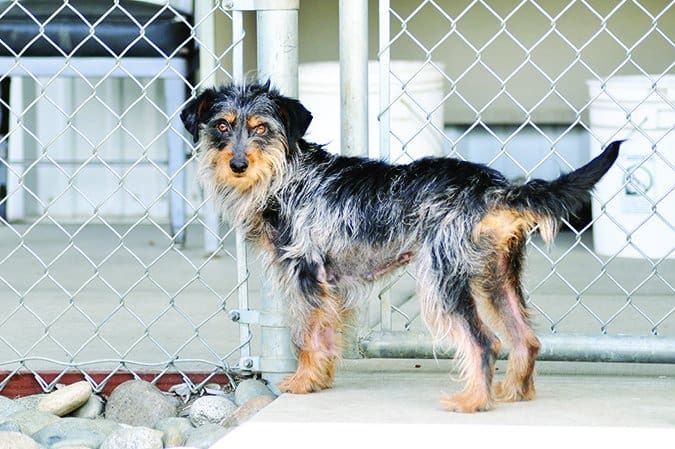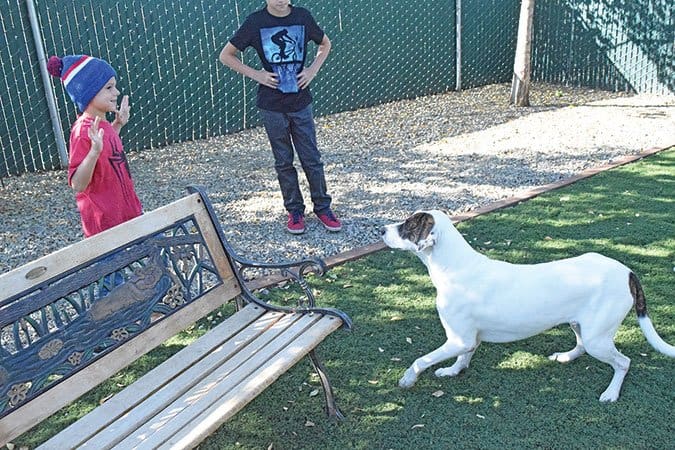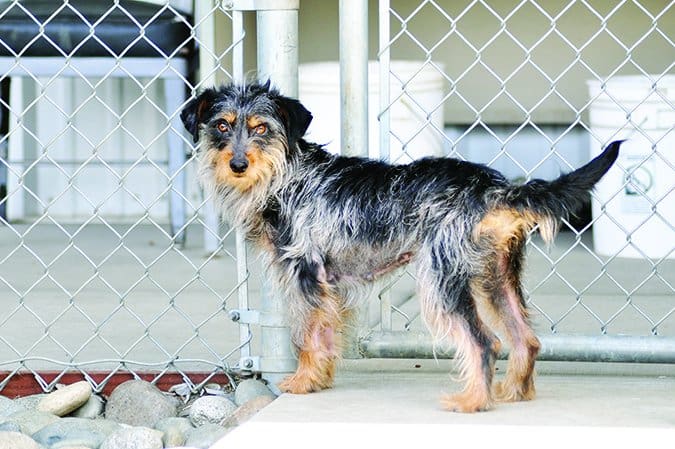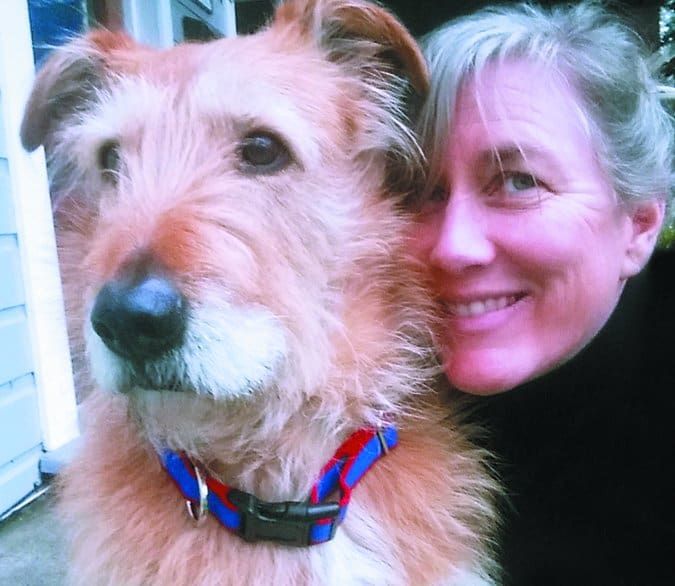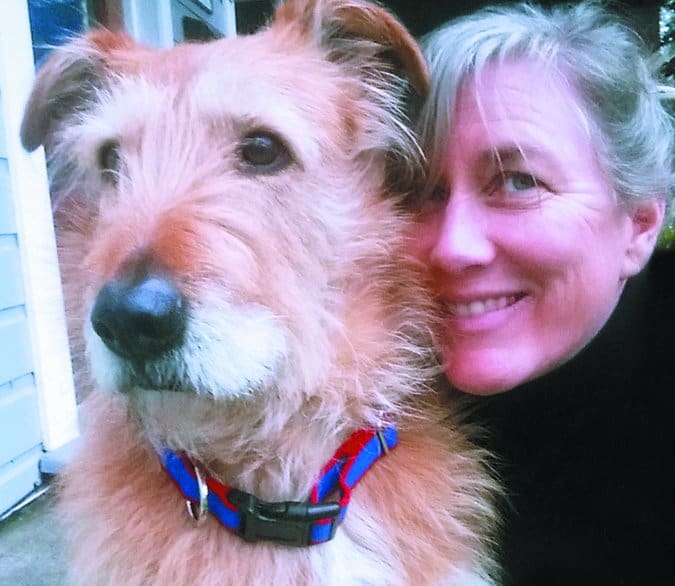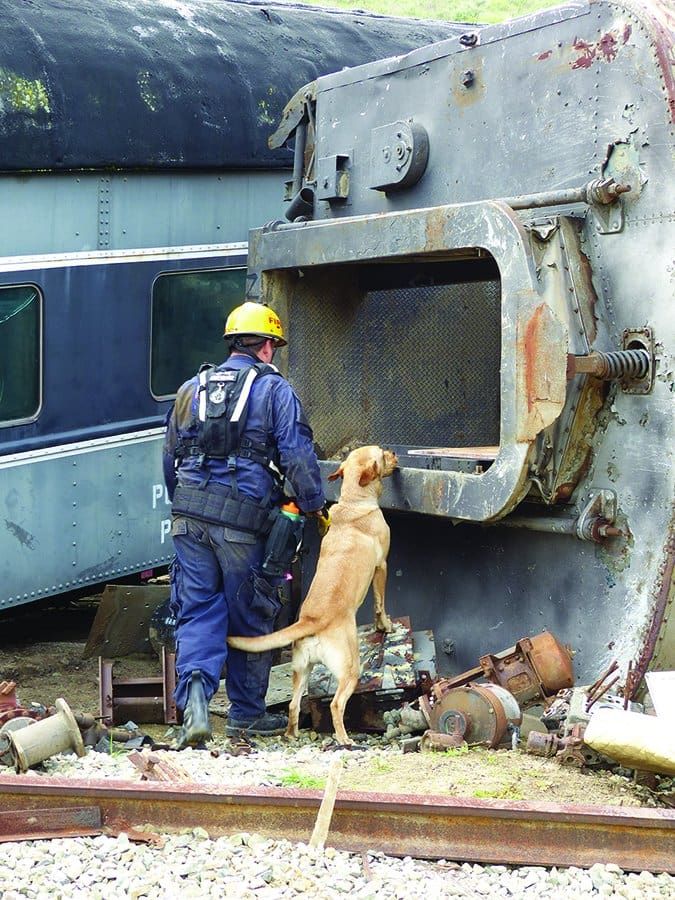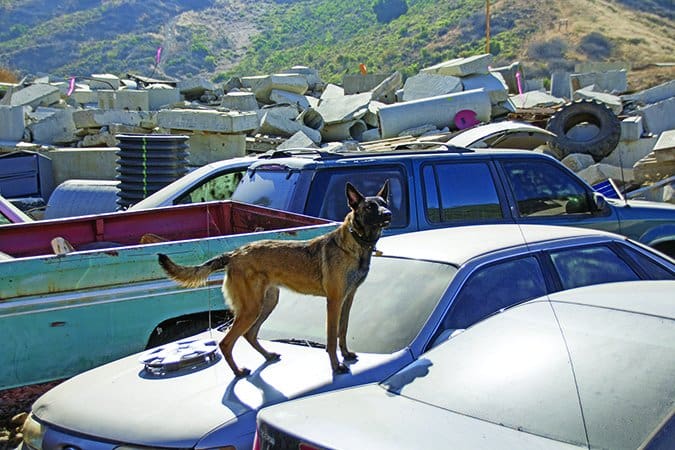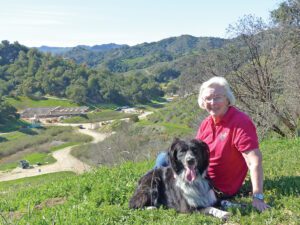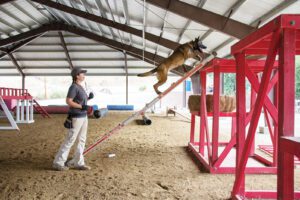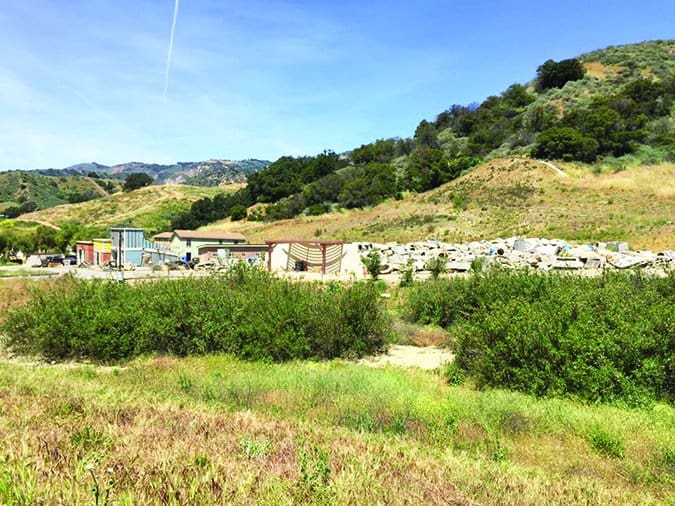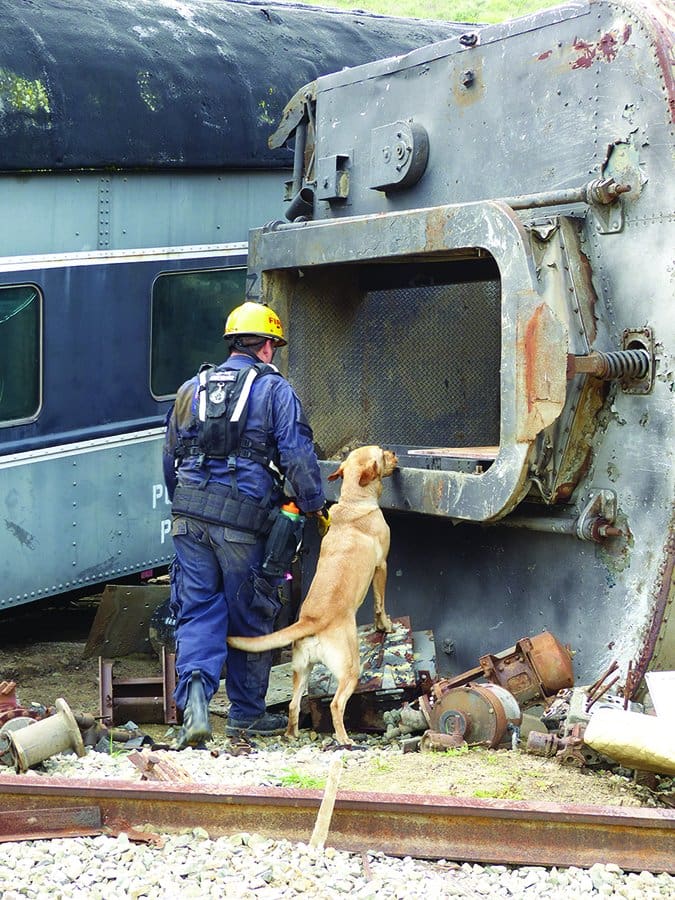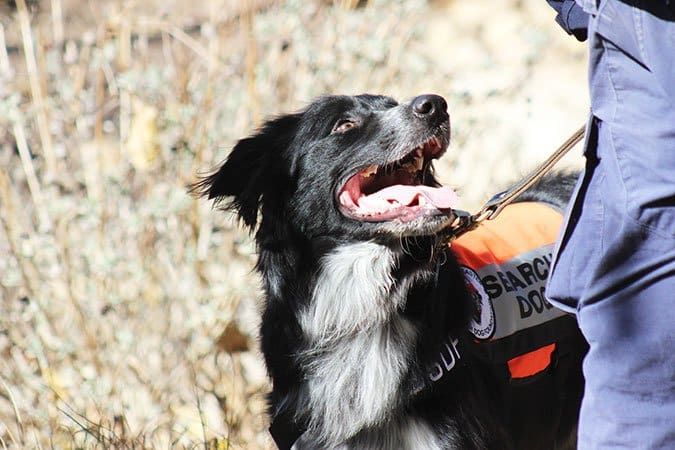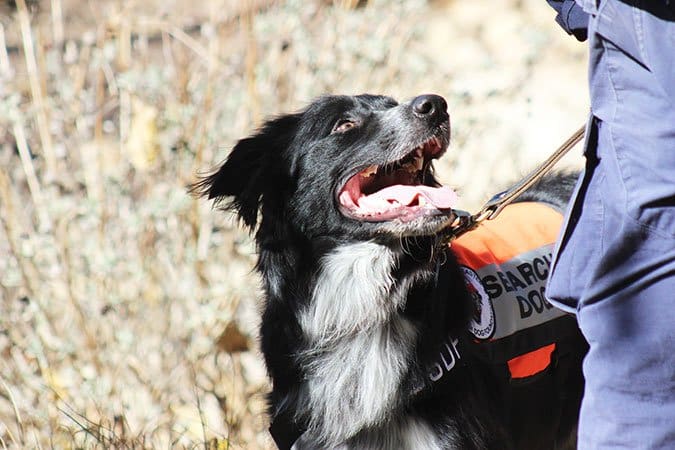[Updated August 3, 2018]
When we live with and see our dogs every day, we don’t always notice the little changes that age brings, especially when we have more than one dog. All of a sudden our senior dog can appear old – and we hardly noticed the minute signs of aging along the way.
Maybe it’s that your dog no longer runs as far or as long in the park. Maybe she’s not as comfortable jumping up on the bed or into the car. Or maybe she doesn’t get up as often to follow you around as she used to. When our dogs lose the ability to function as well as they used to, it’s difficult to know what to do.
Many clients bring their aging dogs to me for private sessions because they have started having difficulty or reluctance with – or can no longer perform – normal life activities like climbing stairs, getting into the car, or walking on smooth flooring. These problems are often related to muscle atrophy in the hind end. Once the dogs get the all-clear from their veterinarian, we work on fitness exercises designed to rebuild hind-end strength; we increase the difficulty of the exercises slowly over time until more function returns.
It should be obvious that there are cases where a dog is suffering from more than age-related muscle atrophy. If you suspect this is the case, see your veterinarian for diagnosis. Also, watch for hearing and vision loss – these changes often occur and can affect behavior and function quite a bit. I can’t stress enough how important it is for your dog to get regular checkups by your veterinarian, especially as your dog ages.
We know that everything slows down with age. We also know that studies show exercise prolongs life, as does weight management, and that using and exercising the brain holds off mental deterioration. The similarities are great enough that it’s safe to extrapolate that what applies to senior humans applies to our senior dogs, too. So let’s keep our aging dogs’ minds and bodies more active through some simple fitness exercises! The dogs’ quality of life will improve with more physical and mental activities – and our quality of life may improve as well, if our dogs regain function and need less help with everyday activities.
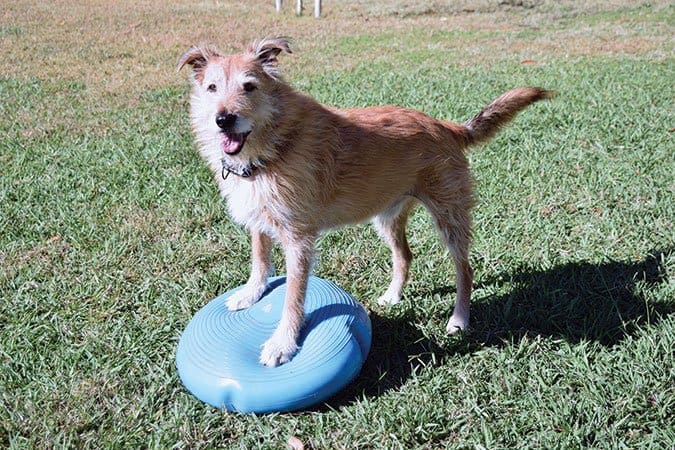
Benefits of Fitness Exercises
Gentle and effective exercise prevents loss of independence and mobility in the aging dog. Fitness exercises keep our aging dogs functioning with confidence in everyday life and can improve:
Proprioception
This is the unconscious perception of movement and spatial orientation arising from stimuli within the body itself. Dogs lose proprioception as they age, but they can regain some with targeted fitness exercises.
Muscle Strength
Dogs lose muscle strength as they age, especially in the hind end. Dogs can regain muscle strength with fitness exercises, developing hind end, core, and stabilizing muscles as well as front-end (shoulder) muscles.
Gait
A dog’s gait can gradually decline due to weakening muscles, pain, compensatory movement that becomes habitual, and loss of proprioception that occurs with aging. Gaits can improve with specific fitness exercises.
Balance and Stability
Along with flexibility, balance and stability can be regained with fitness exercises.
Endurance
This often reduces with aging. Fitness and conditioning exercises improve physical stamina and/or endurance. Your senior can then manage longer hikes, sports activities, walking, and running.
Confidence
Confidence often blossoms as a result of a fitness program, probably because the dog is succeeding, getting stronger, and getting reinforced often for fitness-related behaviors. I think that the increase in body awareness also helps with confidence.
Attitude and Focus
Focus often improves from doing fitness exercises. Attitudes change for the better when the dog can learn to focus again and feels more confident.
Training Fitness Behaviors
When training fitness exercises, just as in training any behaviors, you can use shaping, luring, prompting, or capturing.
- Shaping consists of reinforcing successive approximations along the way to the final goal behavior.
- Luring consists of encouraging the dog to follow something he wants, usually food, then giving it to him as he performs the desired movement. Be sure to use a lure as few times as needed (i.e., two or three times) to get the dog to do the desired behavior, then “fade” (discontinue) the lure. The movement you made with the food or toy can become a hand signal or prompt.
- Prompting involves encouraging or assisting with an aid that helps the dog understand the desired behavior.
- Capturing is done by reinforcing the dog when she naturally performs the behavior on her own.
When you see movement toward, or achievement of, the actual goal behavior, “mark” that moment with an auditory or visual marker (such as the flash of a penlight or the click of a clicker) and then reward your dog to reinforce the behavior. I use verbal markers and clickers to mark behaviors. You can use a variety of reinforcers. I usually use very small, yummy treats.
The exercises in this article provide a good fitness foundation for any dog and can be challenging for aging dogs. Work slowly, take video, and work to sharpen your observation skills. It’s extremely important for you to see your dog’s physical alignment. His spine should be in a neutral position and his legs under his hips and shoulders during these exercises. I also think it’s important to look for the joy on our dog’s faces during these exercises.
Note: I never push a dog into position as a way to get behavior. I want dogs to learn to interact with us and any equipment willingly. I find that rushing or pushing dogs onto equipment is not beneficial for the dog. In fact, it can make the dog avoid the equipment in the future or could actually injure the dog. Dogs have more confidence when they get to choose to participate in training, including fitness exercises.
When your dog makes an error, you can cue something simple, such as a nose-to-hand touch, so your dog succeeds. Then reinforce him (feed him a treat) in a position that helps him be ready for the next cue.
Lori Stevens
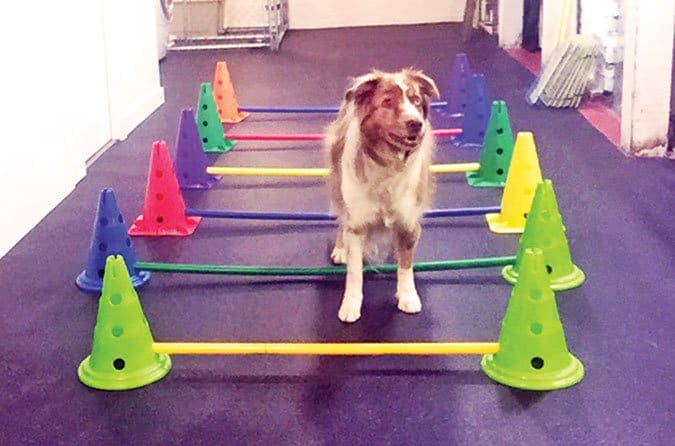
Prerequisites for Exercising a Senior Dog
Before doing these exercises with your aging dog, get an all-clear to move ahead from your veterinarian. If your dog is overweight, work on weight management first. Also, it’s crucial your dog has properly trimmed nails.
Fitness Exercises for Older Dogs
The following exercises are a good foundation set to do for aging dogs. They use a variety of muscles that contribute to your dog’s core strength, flexibility, and balance.
Walk Over Short Poles
Lay some poles on the ground or on something that elevates them no more than two inches off the ground. The spacing should match the length of your dog from her withers to the base of tail or from the ground to the top of her withers. The poles can be round or flat but not more than two inches wide; broomsticks or lengths of one-inch PVC pipe are ideal. If the poles are on the ground and may easily roll, you can use painters tape to hold them in place. You could also place poles or a mop and broom over two-inch tall tuna cans and use painters tape to hold them in place.
Walk your dog slowly back and forth over the poles a couple of times. Look forward rather than at your dog.
You can place mats on the ground a few feet from the end of your row of poles so your dog has something to focus on as he walks or trots over them. Reinforce your dog on the mat for doing this exercise without hitting the poles.
If your dog hits the poles every time, change the height or the spacing of the poles. Determine if your dog improved or not. Also, try going slower to see if that makes a difference.
As long as your dog isn’t hopping or hitting the poles, you can continue with this exercise. Aim for 10 to 15 repetitions of crossing all of the poles in walking. You can also try trotting the dog over the poles as a separate exercise.
This exercise is good for the hip flexor muscles and for proprioception. I do this exercise with most aging dogs who enter my practice, including as a warm-up exercise.
WALK OVER POLES DEMONSTRATION VIDEO 1
WALK OVER POLES DEMONSTRATION VIDEO 2
Standing Leg Lift-and-Hold
The goal is for the dog to shift weight onto three legs while lifting her fourth leg. Ask for each paw to be lifted in turn (hopefully via a cue such as holding out your hand).
Important: Please do this on a non-slippery surface, and do not force your dog to lift her paw. If she doesn’t want to lift a paw, try again later. Continue with this exercise if your dog can easily give you a paw and therefore do a weight shift while standing.
If you can’t lift a paw or two, that’s fine; assume that it’s not easy or comfortable for your dog at this time. You can try again at another time, such as when she first gets up or after she’s been walking around a bit. It’s always good to check in with your veterinarian to make sure there isn’t a medical reason for her to want to keep her paws on the ground.
When you lift one of your dog’s front paws, support her elbow joint. When you lift a hind paw, support the stifle/knee joint. I demonstrate this in the following video.
LEG LIFT-AND-HOLD DEMONSTRATION VIDEO
Observe the weight shift. When the dog lifts her front right paw, her weight shifts to her left hind paw. Can you see this happening?
Leg lifts are important for balance and postural muscles. Doing leg lifts also ensures that both sides of the body work. You can take the leg lifts even further by lifting a leg and holding it up for progressively longer periods, building duration for an increase in balance and strength. Here’s how:
At this point, you’ve determined that your dog can lift each leg and stay in position and balance for a few seconds. Your dog should be standing as squarely as possible, with her front paws under her shoulders and her back paws under her hips. If your dog has balance issues, then have her in a well-fitting harness so you can support her with your hand, if needed.
- Ask for a paw lift; I usually start with a front paw. You might have to help bring the paw up. Do not force this.
- Hold the leg directly under the shoulder or hip, being sure to support the flexed joint (elbow or stifle/knee). Don’t bend the leg more than is needed to lift it.
- Hold the paw up for five to 10 seconds. Build duration gradually by adding two to five seconds each week until you reach 20 seconds. Increase duration only when your dog is comfortable at the current duration.
- Do a set of two to three holds per leg every other day.
Your observation skills are incredibly important as your dog progresses. Video yourself and your dog so you can really see what happens during this exercise.
Watch the videos of Cassie doing more advanced versions of this exercise.
ADVANCED LEG LIFT-AND-HOLDS VIDEO 1
ADVANCED LEG LIFT-AND-HOLDS VIDEO 2
In video #4, Cassie is doing leg lifts on foam padding on a massage table. Watch how she carefully adjusts her balance before lifting each leg. In video #5, Cassie is standing on rubbery inflated discs; she has to really work to maintain her balance while she lifts and holds each leg up. This is a highly advanced version of the lift-and-hold exercise. It’s hard work and should be rewarded accordingly!
Sphinx-Down and Sphinx-Down to Stand
This exercise will likely be different from the “down” you learned as an exercise in dog sports. If this is the case, use a different cue for this exercise so that the two are distinct and unique behaviors.
For this exercise, start with your dog standing. Make sure her paws are square under her shoulders and hips. Ideally, all four of her paws will remain fixed in place during this entire exercise. I often start teaching this exercise with the dog standing on a low platform, just a couple of inches high, that’s a few inches wider and a bit longer than the dog is when in a down. Having to keep all four paws on the platform helps the dog learn to keep all of her paws in place.
Prompt (or lure a couple of times) your dog to fold back and down to sphinx position. All four limbs will flex or bend as your dog moves into the down position.
Then ask her to stand. She should do this by pushing up while all four paws remain in position. You might need to lure or prompt this as well.
I recommend luring this exercise two to three times. Then remove the food and use your hand as a prompt for as long as you need to. Later, you can add a verbal cue.
These exercises are good for core strength, leg-hip joint flexibility, as well as strengthening the hind end.
Aim for five to 10 repetitions per set, if your dog can do this many. If your dog can do only two sphinx-downs with proper form, then ask her for just two.
You can add a couple of sphinx-downs per set every couple of weeks until you reach five to 10 per set.
You can do as many as two to three sets every other day. Do not ask your dog to do strengthening exercises every day.
SPHINX-DOWN DEMONSTRATION VIDEO
Two Paws Up
A wonderful strengthening exercise for your dog’s hind end is a form of “perch work” or “two paws up.” Your dog will stand with her two front feet on a slightly elevated object or surface.
To start, you can use a two-inch-thick book that is a few inches wider than your dog’s stance (measuring to the outside of each paw) or you can use a two- to three-inch-high platform. If using a book, I suggest wrapping it in duct tape and then wrapping it in anti-slip material.
Put the book or other platform on the floor only after you’ve made a plan and filled your treat pouch. Be ready to mark the behavior you are looking for, then reinforce with a yummy, small, soft treat.
You can lure your dog up the first two to three times, but be sure to fade the lure quickly. Go from a treat in your hand to using your hand as a prompt. Once your dog puts both front paws on the platform, click and treat (mark and reinforce) a few times, ending the behavior with a click and treat off of the platform.
It should be relatively easy for your dog to step up on the book. If your dog cannot do this, be sure to bring this up with your veterinarian in case there is a medical issue preventing her from being able to do this.
Remember to watch for fatigue and to give your dog plenty of breaks. You are looking for joy on your dog’s face and excitement when you bring out the book or the platform. When you are ready for a break or to stop training, toss a treat for your dog (I say, “All done!”) and pick up the book or platform, to make it clear to your dog that the training session is over.
Once the behavior of stepping up with two paws on the book is solid, you can build duration. I suggest that you initially build duration to about 10 seconds per repetition up on the book and that you do three repetitions per set. If your dog is strong in the hind end, ask for a duration of 20 seconds.
After about seven to 10 days at 10 (or 20) seconds per repetition and three repetitions per set, you can then add another five seconds. Gradually build up to 30 seconds per repetition by adding five seconds every seven to 10 days. Keep your dog at 30 seconds per repetition for at least seven to 10 days before you increase the height of the platform.
Once your dog is completely comfortable keeping her front paws up for 30 seconds for seven to 10 days, you can increase the height of the platform to as much as four to six inches. But -this is important – when you raise the platform, you must reduce the duration that you ask your dog for. Return to 10 seconds, and then build to 30 seconds after another week or two.
As long as your dog finds this exercise to be easy and fun, you can continue to increase the height of the platform. Just make sure that each time you increase the height, you reduce the duration on the platform back to 10 seconds, and then build up to 30 seconds after another week or two. Stop adding height once your dog can work comfortably at your goal height. The typical height of a stair is eight inches; this is the goal height (with your veterinarian’s approval) for many medium and large dogs. For shorter and smaller dogs, or dogs with physical issues, the goal height might be two or four inches.
Tip: One thing you want to watch for is the widening of your dog’s hind legs. If your dog is standing wider in the hind legs when her front paws are on the platform, then the exercise is too difficult. Reduce the number of repetitions, the height, and/or the duration of the exercise so she can do it without widening her stance. It’s possible you moved through the steps too quickly.
Outside Fitness Work
While you are out walking, you can find all sorts of surfaces for your dog to put two front paws up on, such as curbs, large rocks, and logs. Putting her front feet up will put more weight on her hind end, which is what we are after. Just be sure to support your dog, if needed, on uneven surfaces. A well-fitting harness that doesn’t restrict movement is ideal for both walking your dog and supporting her during fitness exercises. (Of course, as the creator of the Balance Harness® by Blue-9 Pet Products, I recommend that one!)
Look for hills or inclines to walk or run up as many times as you can. Another beneficial exercise for outdoors is zigzagging down hills, which works one side of the body at a time. Sphinx-downs are also fun to practice in the park. Practicing spins in each direction can increase and maintain flexibility throughout the spine.
In warm weather, my dog Cassie walks or powers through shallow water and swims regularly in the local lakes. She also rides on a stand-up paddleboard, which is great for balance and stability muscle work for us both.
Good Form and Fun
The most important thing is that you and your dog enjoy these exercises and be safe doing them. Strengthening exercises should be done every other day, not daily.
I highly recommend finding a professional who can initially go through the exercises with you and your dog, to ensure your dog is in proper alignment and can safely do the exercises. Professionals who can help include Certified Canine Rehabilitation Practitioners or Therapists (CCRP or CCRT) and Certified Canine Fitness Trainers (CCFT). Regular practice, with good form, should help your dog enjoy herself and function better in her senior years.
Lori Stevens has certifications and expertise in behavior consulting, canine massage, canine fitness, and Tellington TTouch Training. She is the creator of the Balance Harness® (Blue-9 Pet Products), and has an established companion animal practice in Seattle, WA. The most recent of her DVDs is called “Gift of a Gray Muzzle: Active Care for Senior Dogs” and is co-presented with Kathy Sdao (Tawzer Dog Videos, 2017). Lori also teaches online classes for Fenzi Dog Sports Academy; her six-week course, “Helping Dogs Thrive: Aging Dogs,” which includes bodywork, fitness, and movement for aging dogs, begins on December 1, 2017.


